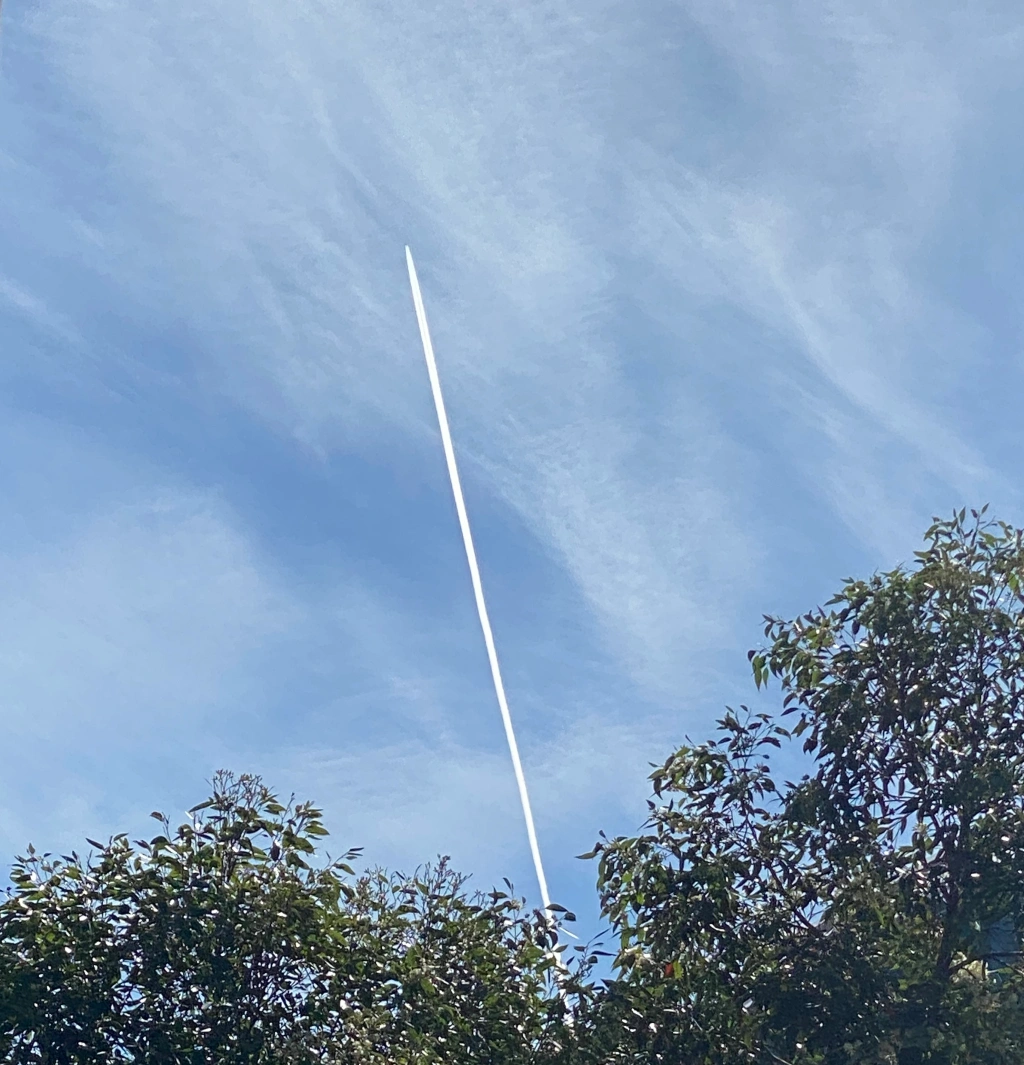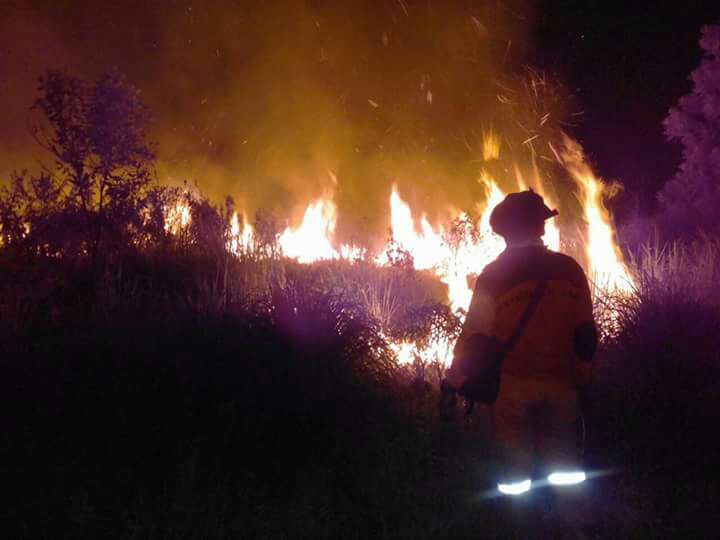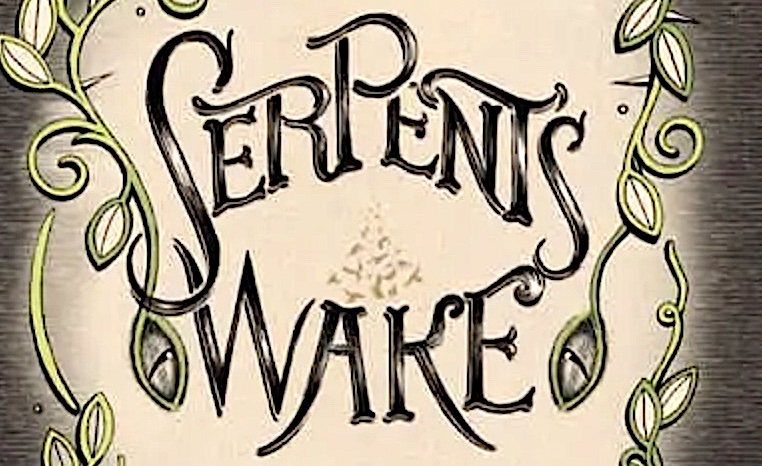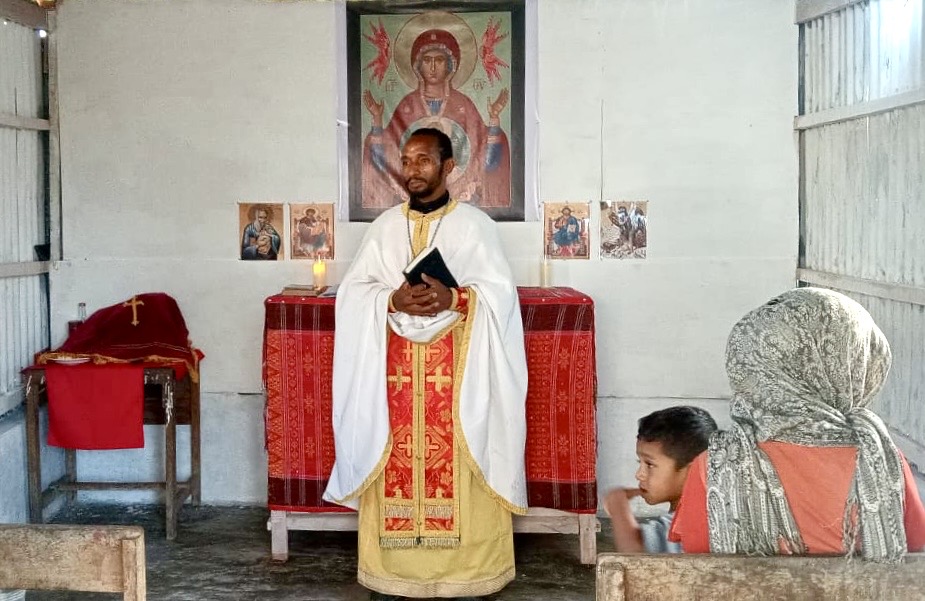Fred Pearce writing in his book The Landgrabbers: The New Fight Over Who Owns The Earth makes the point that “Until the late 1980s Riau was 80 percent jungle. Today the figure is just 30 percent. I’ve never met Fred but I have met the people of Sungai Tohor who face the consequences of a systematic destruction of peatland forest.
In February 2017 I joined members PM.Haze on the Peoples’ Expedition to Experience Peat (PEEP). Later, I wrote Tackling the smoke #haze problem with alternative sustainable #peatland production The article explored the problem facing the community of Sungai Tohor, namely the loss of rainforest cover and the drainage of peatlands face.
The people were fighting back. Our visit led us to participate in a drainage canal blocking exercise part of an attempt to restore the water table in an area of peatland targeted for plantation development.
At the time I met Ridwan, one of many community members working to reintroduce rainforest trees but first some geographical and historical context.
To skip the historical and geographic background and read Ridwan’s story directly, go straight to Sungai Tohor Today, at the end of this post.

Riau’s settlement
Though many of the people living on Riau’s peatlands might identify as Melayu (Malay) on the first enquiry some have ancient origins tracing themselves back to Indigenous Suku (Tribes). Over the centuries they have been variously ruled by competing Hindu, Buddhist and Malay coastal kingdoms. Competition between these kingdoms expanding into the territory now known as Riau heightened in the 7th century BCE. During the colonial era competition for territory was again heightened and has continued with renewed intensity since the late 1970s. The pressure of settlement and competition for land, driven both by formal and informal population movements, has had adverse consequences on the health of the biophysical environment and for the survival of Riau’s remaining Indigenous people.
 Indigenous people were closely connected with the Rokan, Siak, Kampar, and Indragiri rivers and their tributaries.
Indigenous people were closely connected with the Rokan, Siak, Kampar, and Indragiri rivers and their tributaries.
With its rich volcanic soils, Java attracted most of the Dutch colonial interest. Under Dutch control, large areas were devoted to sugar and tobacco cultivation. Later, as industrialisation created a growing global demand for rubber, plantation agriculture became a viable economic activity on the less densely settled island of Sumatra.
Prior to World War II, the Dutch had begun the development of large-scale rubber plantations in eastern Sumatra. In Riau, plantations were smaller since the province’s extensive peatlands were not ideal for rubber cultivation.

A little less than 6% of Sumatra’s rubber was grown in Riau.
Japanese invasion led to dispossession and interment of Dutch plantation owners. At war’s end, the agricultural lands developed by the Dutch were invaded by three-quarters of a million squatters. Foremost among these migrants were the Toba-Batak.[2] This was followed by the settlement of migrants from several other parts of the archipelago principally Javanese, Banjar, Bugis and West Sumatran people attracted by the apparent availability of farmland where smallholders could cultivate rubber, cacao, coconut, and rice.
The opening of the Caltex oil well at Rumbai, at Minas and Duri also operated as a pull factor attracting settlers seeking opportunities created by the petroleum industry. In 1958 Caltex built a floating bridge over the Siak River and by 1962 Caltex had built an oil port and company town at the fishing port of Dumai connecting it Duri by road.
Beyond this growing cultural complexity and increasing density of settlement Indigenous people remained pressed into the upper regions of river systems and areas of closed canopy forest in hilly areas and peatlands. These impacts on Indigenous peoples will form the focus of my next blog post.
Settlement of Riau since the 1970s
Government and private companies were the dominant force in plantation development, particularly when synthetic rubbers began to displace natural rubber and plantations gradually converted to oil palm cultivation. Palm oil plantations require greater investment in planting, fertilizing crops, harvesting and oil processing and this favours larger organisations with an ability to raise the necessary capital. Building palm oil mills for extracting oil is a far more capital-intensive activity than rubber tapping, gathering cacao beans or harvesting coconuts.
During Sukarno’s Presidency . “. . . the government resettled transmigrants in Riau . . . for security reasons, due to political tensions between Indonesia and Malaysia. Transmigrants were sent to the border regions that were considered by the central government to be underpopulated, in order to bolster territorial defense in the ‘confrontation’ against Malaysia.”[3] It was not until 1975, during Suharto’s New Order period, that Riau was formally designated as a transmigration area under Presidential Decree no. 29. Only small numbers were involved.
Border regions were invariably peatland areas. This process continued under President Suharto but with an emphasis on development for agriculture, specifically, rice cultivation.
“In Riau, the first transmigration settlement in the tidal swamp area was in Teluk Kiambang, Tempuling sub-district, in the District of Indragiri Hilir, where 150 families (735 persons) were resettled, followed by another 150 families (732 persons) in 1973/74” [4]
This is peatland and estuarine swamp.
Tirtosudarmo observes that “The government decision to use tidal swamp was partly because the best lands in the upland areas were already under cultivation by local residents. In many areas customary (adat) law gave land management rights to contiguously spaced local units known as marga or clans. In many areas where these rights had been exercised, particularly by shifting cultivators, the problem of alienating sufficient land for transmigration was more serious. Thus, in general, the upland areas of Sumatra presented difficult land rights situations for new settlements.” [5]
The Suharto government established a rural development program called Nucleus Estates and Smallholders (NES) in 1978. Settlers known as Plasma Settlers were given two-hectare plots for the cultivation of cash crops such as rubber or oil palms. These were inside company plantations, usually government. At first, they were required to devote a further one hectare to food cropping but in 1997 they were extended the right to cultivate oil palm, exclusively.
NES has brought large changes to the rural economy and landscape in Riau as it was here that oil palm cultivation by smallholders has been greatest.[6]
Impact of increasing global demand for vegetable oils
An increasing global demand for vegetable oils led to an expansion of the land under oil palm cultivation in Indonesia. According to the World Bank (WB) Malaysia and Indonesia (notably Sumatra and Kalimantan) account for about 85 percent of global output. Since 2006 Indonesia has been the larger of the two producers.
The WB reports that Some 70 percent (4.2 million ha) of Indonesia’s oil palm plantations are on land that was previously forested; more than 56 percent of the expansion between 1990 and 2005 occurred at the expense of natural forest cover. It also notes that the process of land acquisition for large-scale oil palm development can generate negative impacts on the livelihoods of communities including small farmers and Indigenous Peoples. This is particularly true when land titles are unclear or unrecognized and companies or the government, as a result of inadequate legal protections or poor enforcement, failure to consult adequately with existing customary users or provide appropriate compensation.
A study of the Indonesian palm oil industry carried out as part of a global study under the coordination of the Australian National University, concluded that palm oil developments have had a positive impact on the incomes and living standards of all involved.
Such statements don’t adequately account for environmental costs and other externalities. They must be viewed against the reality of the largescale operations undertaken by plantation companies. These operations have had a serious impact on the natural environment and traditional rural livelihoods. Apart from forest clearing, the most noticeable impact has been smoke haze. The outer islands of Indonesia, particularly Sumatra and Kalimantan, have been greatly affected by the recent haze problems caused by the use of fire in forest clearing. More than 100,000 premature deaths in the region have been attributed to transboundary haze pollution in the El Nino year, 2015. Areas like Pekanbaru in Riau and Palangka Raya in Central Kalimantan were seriously affected. Moreover, plantation companies are powerful enough to exploit legal vagaries, pressure various levels of government, particularly regional and local officials and to take community and Indigenous lands. At the same time the number of smallholders is increasing and their economic position, in monetary terms, is improving. So, the situation is complex. Serious tensions and conflicts sometimes arise.[7]
Forest clearing and the development of drainage canals, along with the use of fire for land clearing, are well-documented problems associated with palm oil plantation development on peatlands. Dispossession of Indigenous people is less well documented and will be covered in my next post.
Wood pulp and paper production
Since the 1990s Riau peatlands have also been cleared for plantations of eucalyptus and acacia sources of wood pulp in paper manufacture
Another major impact on peatlands is the development of the wood pulp industry. Two companies, Sinar Mas Group and Royal Golden Eagle Group have dominated this exploitation of Riau’s forests since the mid-1990s.
Sinar Mas is a vertically integrated corporation that owns Asia Pulp & Paper, PT Aria Abadi, Golden Agri Resources, PT SMART, etc. Royal Golden Eagle has Asia Pacific Resources International (APRIL), Riau Andalan Pulp, PT Asian Agri Agro, etc
Under the New Order regime of President Suharto, forests were declared ‘state forest’. “They were to be deployed in the name of national development, part of the ‘new order’ initially thrust on him by a group of US-trained Indonesian economists known as the ‘Berkeley mafia’. In practice, in his hands, it meant they would be handed out to anyone with the cash and the connections.”[8]

Both companies built pulp mills a mere 40 kilometres apart near the service town of Pangkalan Kerinci. It would be difficult to find any other part of the earth’s surface where there is such a concentrated demand for wood. Sumatra and Indonesia Borneo have experienced the most rapid deforestation in human history. After forested peatlands had been cleared the companies planted out eucalyptus and acacia to maintain production. Where these plantings were on peatland, large area were drained to promote growth
In 2013 APP announced that in future the company would obtain the informed consent of local communities before preparing new plantations, they also announced, a moratorium on all natural forest clearance. This meant that it would no longer accept Natural Forest Wood (NFW) form its suppliers as part of its Forest Conservation Policy (FCP). It qualified this by adding “ensuring our forest clearance moratorium is properly implemented is a very complex task. While we believe we have made considerable progress, there have been some challenges. That’s why we developed a procedure to address any grievance that our stakeholders might raise, in relation to the implementation of the FCP.” It was not until June 2014 that the use of NFW.
Despite this commitment, the complexity of the task involved the simple reality that The ownership of 25 of the 27 suppliers is exercised through layers of shareholding companies that are almost always based in Sinarmas offices and in most cases have Sinarmas employees, ranging from top executives to humble IT workers and accountants, as their directors and commissioners.
Associated Press found that logging of NFW continued in Indonesian Borneo. In Riau province Sinarmas is pressing ahead with plans to turn 66,000 hectares (163,000 acres) of state land in the Bangka Belitung island chain off Sumatra into industrial forestry plantations despite substantial opposition from locals. The move puts the company on a collision course with villages that farm on the land and which some 100,000 people call home.

Wetlands.org reports that In South Sumatra APP has started operating its OKI pulp mill with $2.5 billion in loans from China’s state-owned banks. The mill’s pulp production capacity is 2.0 million tons/yr. but an OKI director advises APP will increase the mill’s capacity to 2.8 million tons/yr, though its plant can be upgraded to produce 3.2 million tons/yr. At present, it seems there are insufficient plantation acacia and eucalyptus to support the mill and its South Sumatra concessions are at least 59,000 hectares short of the planted areas needed to produce the volumes OKI will consume.
The other big wood pulp operation in Riau Andalan Pulp and Paper (RAPP), the operational unit of Singapore-based pulpwood company Asia Pacific Resources International (APRIL), committed to a FCP policy in 2015. Through 2017 it was in dispute with Indonesian Ministry of Environment and Forestry (MoEF) directives. The ministry had accused the company of failing to comply with new peatland protection laws, which aim to prevent choking annual haze and encourage plantation firms to move their operations to non-peatlands through land swap deals.
RAPP has a similar history to that of APP and is responsible for large areas of deforestation and peatland drainage.
The story of Sungai Tohor and Sago
Sungai Tohor is a district on the peatland island of Tebing Tinggi which is part of the Meranti Islands Regency. In 1904 it was settled by Malay people and has become an area of sago cultivation. Sago thrives in the wet conditions and benefits from interplanting with forest trees that help to draw moisture closer to the sago palm’s shallow root system. Sago existed in the area before the permanent settling of Sungai Tohor and is not indigenous to the Meranti Islands.
Trade in sago dates back hundreds of years. It is believed to have been introduced by Bugis trading fleets or other ancient seafarers. This is consistent with a report in the Singapore Chronicle, 15 February 1827 titled On the Cultivation of Sago in the East.
Indigenous people such as the Akit and Orang Laut were the first to harvest sago in the region. ‘Siak sago’, as it was called, has been long regarded as the best quality. Siak was a generic term for the Indigenous people of the peatlands who seem to have spoken Austronesian languages that acquired loan words from Malay and became a distinct dialect. Sago was harvested first by these Indigenous people.
Sungai Tohor’s community stepped up sago production after experiments with rice cultivation failed. In the 1980s they were encouraged by the provision of small government funded sago mills. See Managing Peatlands in Indonesia: A case study of small islands in Riau. Monash University Sustainability Institute. October 2013.
For more background on the origins and cultivation of sago on the north coast of Sumatra download the pdf from Oriental Herald Vol 14. On the Cultivation of Sago in the East – Singapore Chronicle, 15 February 1827.
Sungai Tohor’s community stepped up sago production after experiments with rice cultivation failed. In the 1980s they were encouraged by the provision of small government-funded sago mills. See Managing Peatlands in Indonesia: A case study of small islands in Riau. Monash University Sustainability Institute. October 2013.
Sago cultivation does not leave peatland forest undisturbed but the ecological disruption it causes is small compared with the deforestation that comes with, extensive oil palm plantations or pulpwood extraction followed by development of eucalypt and acacia plantations.
The PT Lestari Unggul Makmur (LUM) concession on Tebing Tinggi island
In May 2007 the Minister of Forestry issued a Pulpwood plantation permit PT Lestari Unggul Makmur (LUM), a company associated with RAPP. The concession was 10,390 hectare total.
In 2009, LUM obtained natural forest clearing permit of 2,832 hectares. Its production target was 262,837 cubic meters. As a first step, according to Eyes of the Forest, Indonesia, LUM cut 10 kilometers of 12 metre wide drainage canals to a depths of 5 metres. These reduced the water table level in its peatland concession. The concession overlapped the Sungai Tohor’s community lands in an area where peat depths ranged from 2 to 4 metres.


Community resistance to PT LUM
The canal project damaged the peatlands forest ecosystem and lowered water levels where sago palms were under cultivation provoking a response from the wider community of Tebing Tinggi. They rejected the LUM pulpwood plantation development insisting that as well as the negative ecological impact of the canals and planned natural forest clearing, the development would destroy the sago industry, cause subsidence and weaken the areas protection from ingress of salt water. They also stressed the negative social impacts for their community as it relied on a local economy based on coconuts, sago and areca palm (Dypsis lutescens).
Indonesian Government Regulation number 26/2008, the peat areas inside the National Protected Area including peat forest with a depth of 3 metres or more in a river catchment or swamp should be protected. The community argued that LUM PT LUM had breached the law.
A strong local campaign began building around the issues of:
- the ecological destruction caused by deforestation bringing about flora and fauna extinction;
- the potential for declining sago production because of drainage which could also lead to forest fires given peatlands flammability;
- the damaging impact of the acacia of pulpwood plantation that would inevitably follow forest clearance not only on the supply of water but also because they acted as a host for beetles that attacked sago and coconut palms; and,
- intrusion from seawater that will threaten sago palm plantation.

By 2011 sago production started to decline because canalisation had lowered water table.
Eyes of the Forest strongly supported the community stating, in summary PT Lum should:
1. curtail all plans to clear natural forest and canal drainage in
in its concession since its permit appears to be illegal and will cause social conflict, damage to the local economy, threaten high conservation forest and cause a negative effect on global climate;
2. dismantle all newly established canal infrastructure causing deterioration of the peat ecosystem and increased CO2 emissions; and,
3. leave all concession areas for conservation and limited utilization for boosting community’s economy, by considering that its management is implemented under a fair scheme of mutual benefit for the community.
Resistance to PT LUM’s concession spread rapidly to the 7 other villages of Tebing Tinggi. Community resolve was strengthened when in February 2014, fires broke out on Tebing Tinggi. Dry conditions made fire-fighting difficult.
With the support of WALHI, The Indonesian Forum for Environment, part of the Friends of the Earth International, leaders of Sungai Tohor posted an online petition asking Indonesia’s President Joko Widodo (Jokowi) to come to Sungai Tohor and see the damage.
The community of Sungai Tohor also began a project to dam the canals cut by PT. LUM aimed at raising water tables in the area.
In June of 2014 PMHaze sent a team to Riau as part of a hotspot investigation project. They visited three areas Mumugo/Rantau Bais; Pelintung; and Sungai Tohor. Reacting to the February fire Sungai Tohor’s village head and WAHLI-Riau attributed the fire to drying of the peat because of canals dug by PT. LUM and PT. National Sago Prima (PT. NSP). PMHaze reported that new canals were still being dug during their site visit observing that on PT. NSP’s concession, which has formerly been a timber concession with canals dug as far back as 1995 canal blocking had been undertaken in 2013 and 2014.
In November 2015, the President Jokowi visited the area and agreed plantation permits had to be reviewed if they were indeed destroying the ecosystem and would have to be terminated. “‘We must not allow our tropical rainforests to disappear because of monoculture plantations like oil palm,’ he said.” He went on to highlight the need for:
1. enforcement of the law related to the Compliance Audit findings on 17 corporate transgressors in the peatland of Riau;
2. total protection of the peatland;
3. strengthening and extension of the moratorium on permits; and,
4. acceleration of the implementation of the one map policy that will force a consensus on territorial issues.
Sungai Tohor Today
Since my visit to Sungai Tohor on the PEET Expedition and have kept up contact with Ridwan.
At the time of my visit he explained that apart from canal blocking to rewet the peatlands, he and other members of his community were attempting to plant indigenous forest tres in amongst community sago palms and extending the plantings to areas already damaged by clearing and burning. This is a difficult task. Just before Christmas he explained that his project was in desperate need of funds to buy small pots for seed stock and shade cloth.
I couldn’t help, the small amounts of money I could send him were going to be eaten up by transfer charges, so I decided the best way forward was to present a visual coverage of the work Ridwan and his team are doing in the hope that others might like to help him.
What follows is a collection of both my images and others that Ridwan has sent me.




[1]Kanō, H – Indonesian Exports, Peasant Agriculture and the World Economy, 1850-2000: Economic Structures in a Southeast Asian State. NUS Press. Singapore. 2008
[2] The Postwar Migration of the Toba-Bataks to East Sumatra. CLARK E. CUNNINGHAM. (Cultural Report Series.) New Haven: Yale University Southeast Asia Studies, 1958. xii, 189 pp.
[3]Tirtosudarmo, R – Transmigration and its Centre-Regional Context: The Case of Riau and South Kalimantan Provinces/Indonesia. A thesis submitted for Doctorate of Philosophy, ANU, 1990 pp.190
[4]op.cit pp.192
[5]op.cit pp.192-193
[6]Kano – op.cit pp.3
[7]Koizumi, Yusuke – Migration and Its Impact in Riau Province, Indonesia: An Analysis of Population Census Data and Topographical Maps. Journal of Asian Network for GIS-based Historical Studies Vol. 4 (Dec. 2016) pp. 3-10
[8] Pearce, F. The Landgrabbers: The New Fight Over Who Owns The Earth. Part Four: China’s Back Yard, 15 Sumatra, Indonesia: Pluping the jungle





Leave a comment